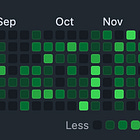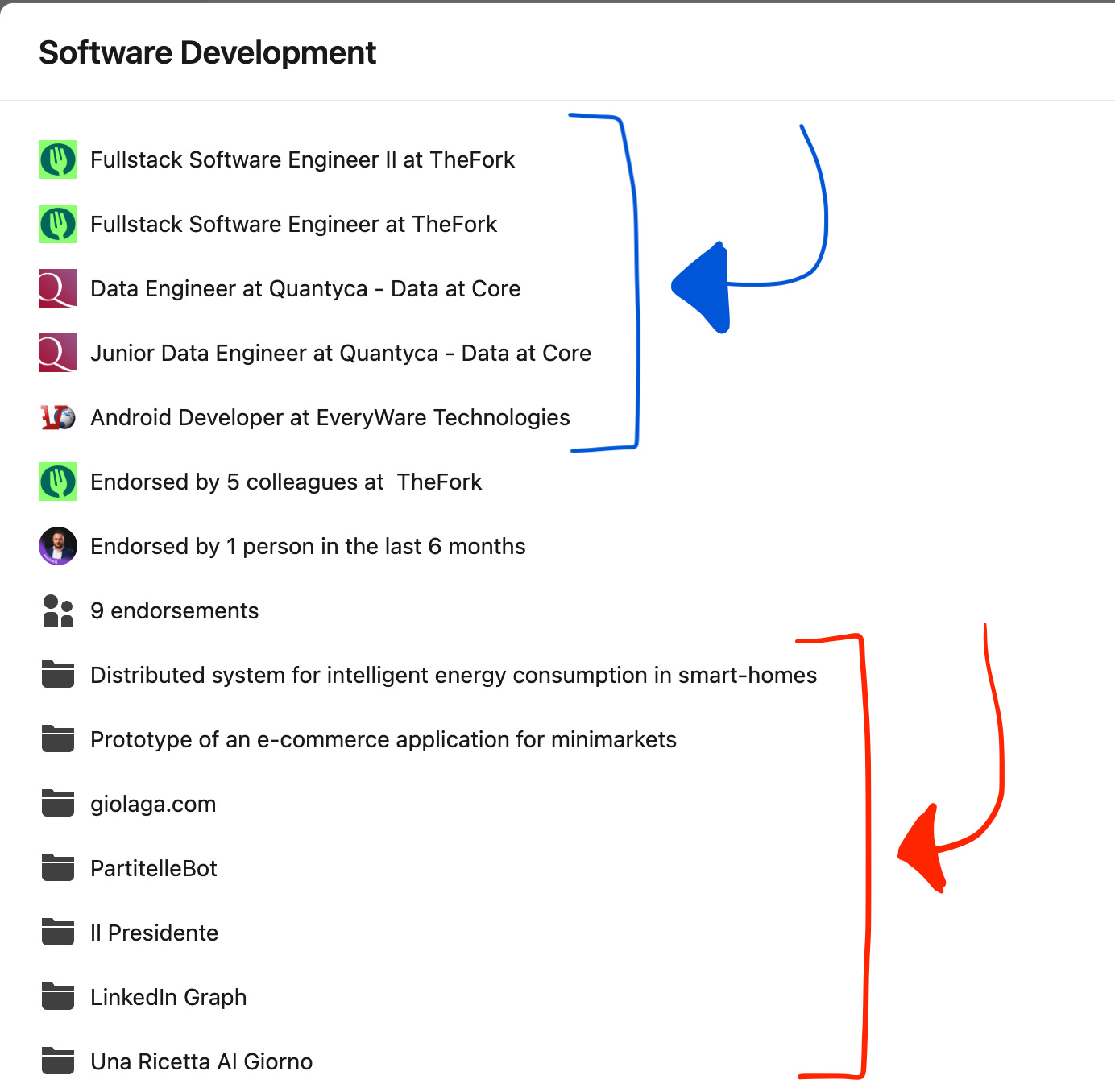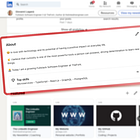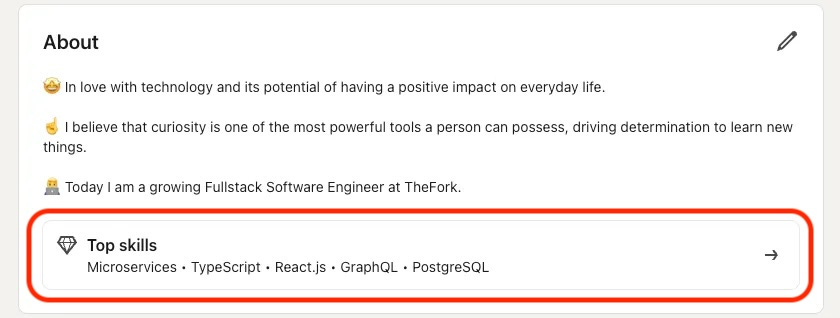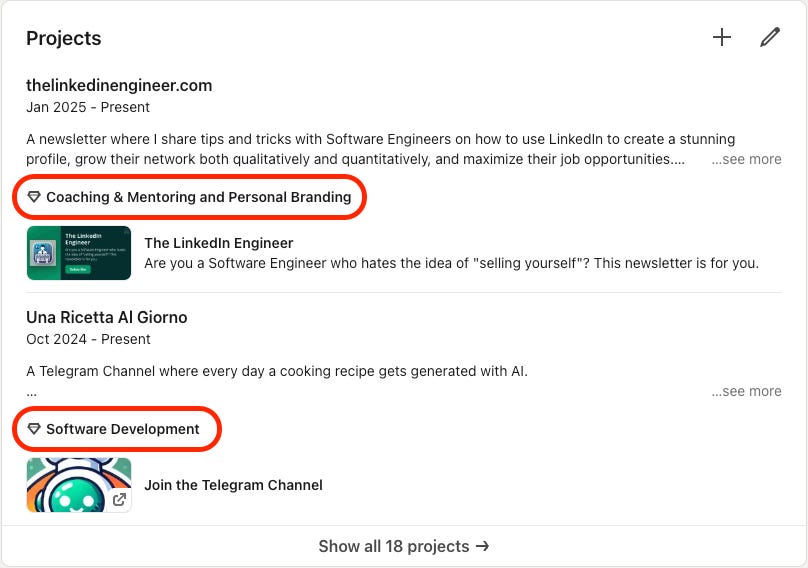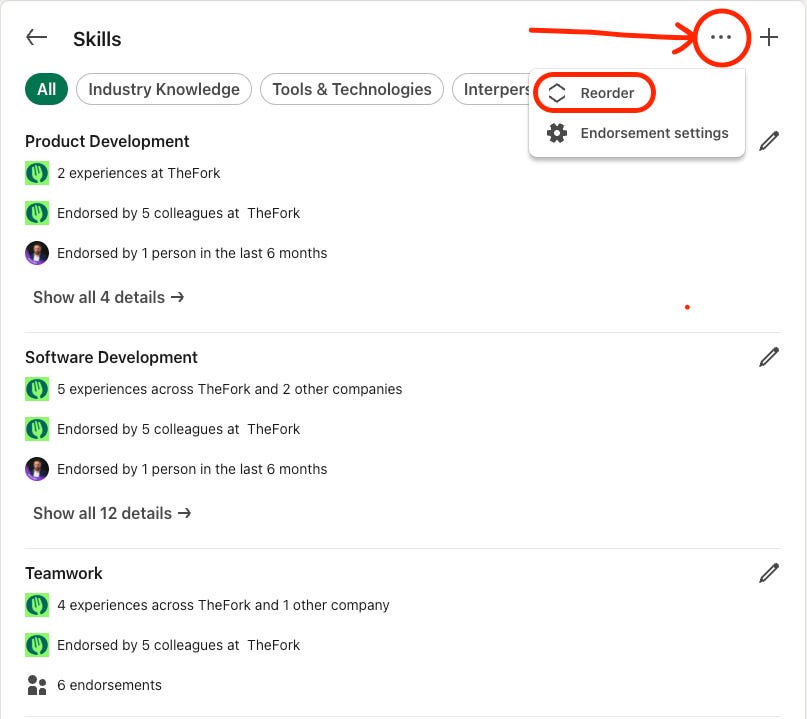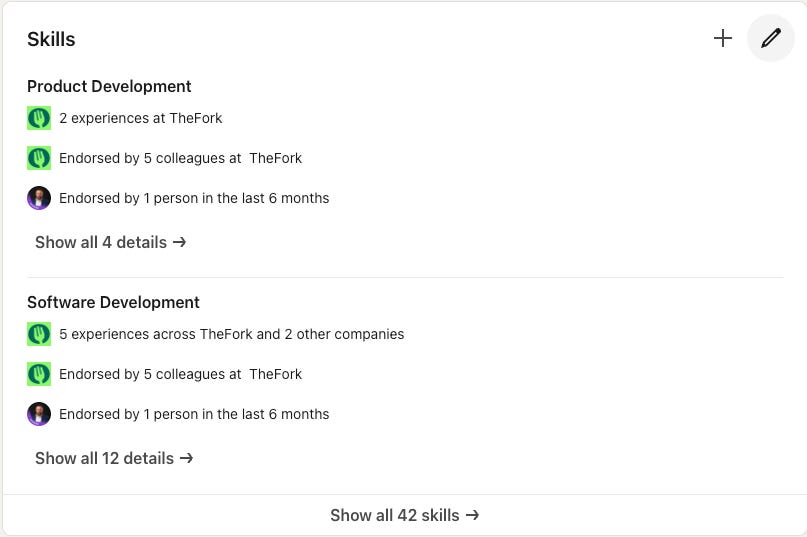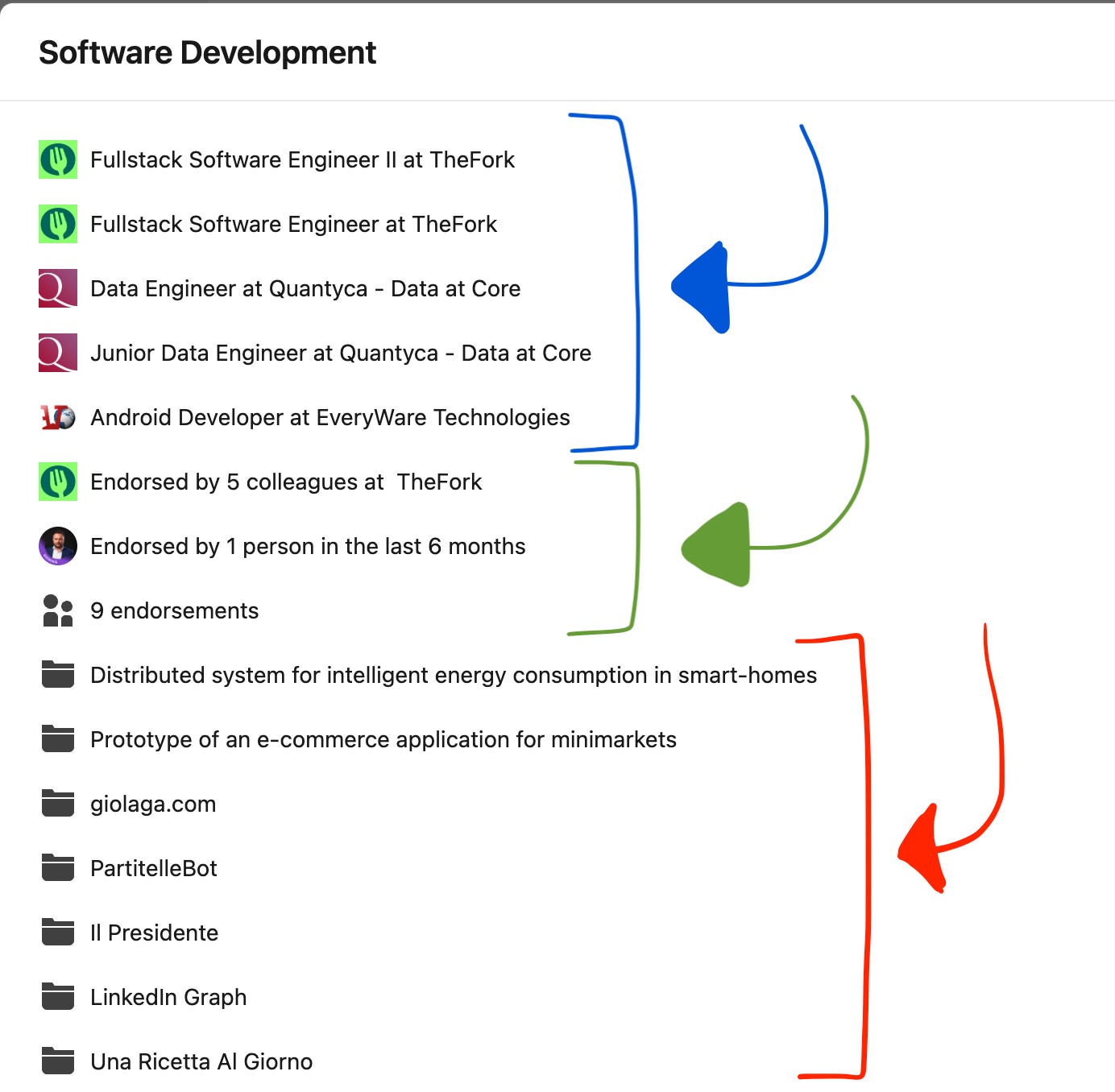Do "Skills" matter on LinkedIn? 💡
How you should show them 👇🏻
45% of recruiters on LinkedIn use skills data to identify candidates for open positions.
(study on LinkedIn statistics)
Then the answer is simply Yes, right?
Hold on ✋🏻
If you think it’s enough to write tons of skills, then you’re on the wrong path 👎🏻.
Skills are extremely important on LinkedIn, and they were probably one of the first features released when this platform was born.
However, their usage has become very chaotic nowadays, and you have to adopt a structured approach to create a tidy profile that identifies you exactly as the Software Engineer you want to be.
So let’s start and see how to do it 👇🏻
🤔 Where in your profile?
Skills have undergone an important evolution over the years: at the beginning, they were present in just one specific section, but since then, they have started spreading across the user profile.
In the current state, we have 3 categories of Skills
the “Skills” section
the Top Skills in the “About” section
the Associated Skills in the “Experience” and in the “Projects” sections
⚠️ When you indicate a skill in (2) or (3), it is automatically added to (1) if it doesn’t already exist. Be careful with that because you can list a maximum of 100 skills (source).
🧠 Less is more
Okay. We said 100 is the upper bound, but I seriously encourage you to stay far from that number. What you want to do is find the right trade-off between looking skilled and not overwhelming the visitor with too much information. Also, remember that the more skills you add, the harder it will be for you to choose what to highlight at the top.
If you are a student → don’t go beyond 20
If you are junior / mid-level professional → don’t go beyond 40
If you are experienced → don’t go beyond 50
➗ Divide them into 3
Once I told you: “If it’s hard, split it into 3”.
I think, in this case, skills should be divided into 3 categories:
Hard skills
The technologies in which you are proficient
Examples: Python, JavaScript, TypeScript, GraphQL, PostgreSQL, Git, React, Next, etcSoft skills
The behavioural aspects in which you excel
Examples: Teamwork, Communication, Transparency, Critical Thinking, Decision-Making, Problem Solving, Curiosity, etcTopics
The areas you cover in the industry
Examples: Microservices, Software Development, Product Development, Consulting, Machine Learning, Data Engineering, Data Analysis, Mobile Development, etc
and your aim should be to have more or less the same number of skills in each category.
🔒 Use a closed set
We have plenty of synonyms to refer to the same thing, for example:
”Software Development”, “Software Engineering”, “Software”, “Software Craftsmanship”, and so on…
Your goal is to avoid synonyms and pick a unique term for each meaning you want to describe.
💡 Build a glossary: choose one term and use it everywhere. This little tip will ensure that you have a few meaningful words, making it easier to refer to them across all categories.
As I said in the previous post
This approach will help enrich each skill with details:
🔝 Put hard skills in the Top Skills
We discovered this in the “About” section
As a Software Engineer, my recommendation is to put here the 5 hard skills that best represent the technological stack you work with.
🔗 Put topics in the Associated Skills
We said they appear in the “Experience” section…
…but also in the “Projects” section.
Here, my recommendation is to put maximum 3 topics per item.
🧹 Reorder the “Skills” section
This section is a bucket populated with all the skills, I strongly suggest reordering them…
…so that the most important ones appear at the top.
We said Top Skills should indicate the hard skills and the Associated Skills should include the topics.
My recommendation for the Skills section is to have:
first 2 items the topics you think best define your role in the industry
(in my case, I chose “Product Development” and “Software Development” to indicate the fact that I am a Software Engineer in a Product company)
Why 2? Because (at least now) 2 is the number of skills that are previewedfrom the 3rd item to X, a central block of soft skills
from X to the last item, a final block of hard skills (because you have already listed the first 5 in the Top Skills)
🤝 Look for Endorsements
The final tip is to complete the set of details with endorsements.
This was also one of the very first features LinkedIn introduced:
Endorsing a skill is a sort of recommendation that users can leverage to give it more weight.
A profile with many endorsements becomes strongly attractive because it signals that the person is well-known and widely recognized by others for the skills they list.
How can you get endorsements? 👀
You have two ways:
1️⃣ The polite way 🎩 → Explicitly ask close friends to endorse your skills.
2️⃣ The boot-licker way 😁 → A bit sneaky but very effective: take the initiative and start endorsing other people’s skills. This will inevitably create a sense of obligation, making them more likely to return the favor. Of course, I recommend using this approach only with people who truly deserve to be endorsed.


